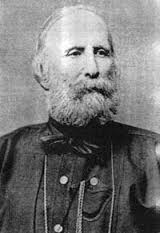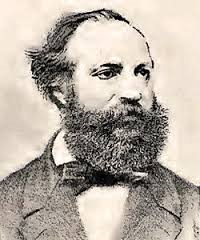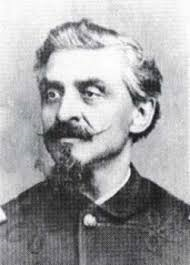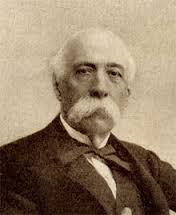
Piedmont’s Prelude to War (1856-1859)
By: Tom Frascella December 2014
By 1856 the Piedmont Government under King Victor Emmanuel II had confirmed, in the blood of its troops, its dedication to an alliance with Great Britain and France. In 1855 Piedmont had sent 20,000 of its troops to fight in the Crimean War and those troops had suffered 10,000 casualties. It had earned a place on the victor’s side of the Paris Peace Conference of 1856 which brought a conclusion to the Crimean War with Russia.
The Crimean War was the first major European conflict after the Napoleonic Wars of a generation earlier. The resulting aftermath of the conflict was a restructuring of internal politics, and repositioning of alliances of much of Western Europe. There were of course “winners” and “losers” in this conflict some of whom were not even participants. First of all the conflict gave rise to a major resurgence of “nationalism” in most to the major European powers. The nationalistic fervor lead in part to the two World Wars of the 20th century.
The two biggest “losers” in the Crimean conflict were Russia and the Kingdom of the Two Sicilies. Czarist Russia lost the Crimea, its Mediterranean naval fleet, its warm water ports, and its easy access to trading partners in the Mediterranean, most notably the Kingdom of the Two Sicilies. Russia also was forced to give greater autonomy to the provinces of Romania and Serbia. The Kingdom of the Two Sicilies of course lost the emerging economic opportunity that having Russia as a trading party afforded especially as a purchaser of sulfur. That loss of economic opportunity effected the economic independence from Great Britain and France that the Bourbon Monarchy in southern Italy was working to establish. The Bourbon Monarchy did however still have close political ties to the Austrian Empire which it considered an ally.
Arguably, the Austrian Empire should also be counted among the “losers” in the Crimean conflict. Austria was caught between the warring nations, both sides of which expected Austria to ally with it. Austria instead choose a political position of neutrality insuring that both sides felt betrayed. The result was that at the conclusion of the Crimean war Austria was politically estranged from Russia, Great Britain and France.
The main “winners” in the conflict were Piedmont-Sardinia. France, Great Britain and Turkey. For Piedmont-Sardinia victory was to be had primarily in its political positioning as allied with super powers Great Britain and France. In addition, in the political alienation of Austria from other European super powers, Piedmont-Sardinia found an opportunity to weaken the threat of dominance, if not the outright control that Austria had for centuries exercised over northern Italian territories. Yet Piedmont-Sardinia did not emerge from the Crimean Conflict with any formal commitment from either Great Britain or France for a mutual security agreement against Austria. Such an agreement might have been viewed by Austria as an aggressive act a risk that neither, France or Great Britain seemed willing to take in 1856.
For Turkey the obvious and immediate victory lie in the loss of the Crimea’s warm water ports to Russia’s fleet. The allied defeat and elimination of an aggressive and growing Russian naval fleet on its border took away a major threat and allowed the Turks to focus on a declining Empire of their own. The Peace accord allowed for some reorganization of Balkan political regimes however the growing independence movement of ethnic enclaves against Turkish rule continued to heat up as an ongoing late 19th century problem.
The two biggest “winners” in the Crimean conflict were France and Great Britain. Both France and Great Britain increased their trading advantage with the Mediterranean as a whole. They gained port access and an alliance with Piedmont-Sardinia. They eliminated Russia as a naval threat to trade in the Mediterranean. They also limited southern Italy’s ability to seek ready new buyers for the bulk of its sulfur production which formed a major part of the Bourbon government’s national revenue.
The European political opportunists of 1856 were quick to adjust to the new realities of Europe post the Paris Peace Conference. In Italy one of the first easily observable changes to occur is the build-up, training and equipping of disproportionally large military forces in both the Kingdom of Piedmont-Sardinia and the Kingdom of the Two Sicilies. Clearly both northern and southern Italy recognized that the new Europe posed a threat that needed to be addressed with heightened military security.
Both Great Britain and France after the Crimean Conflict continued to expand and stabilize their global trading and territorial Empire. However, repositioning in Europe was also seen as necessary by the two superpowers. An example of global repositioning is a French company in 1856, in a move that seems to have caught Great Britain by surprise, entered into an agreement with the government of Egypt to build a canal in the Suez. At the same time an American company begins to develop a canal project in the Isthmus of Mexico.
Great Britain is quick to realize that if either project or both are successful they will radically alter the distances, costs and routes associated with global markets. They also realize that control of these canals grants to the owners’ practical control of future shipping and costs associated with manufacturing and delivery of goods and influence. While both projects are proposed and organized as neutral commercial enterprises Great Britain uses its considerable resources over the next decade and a half to delay, discourage, damage and encourage local political unrest in the areas that surround the projects. The interference is successful in frustrating the projects to the point of bankruptcy and ultimately the companies that take over construction are British.
Into this world of international political intrigue the focus of this article is with the more subtle changes occurring in Piedmont-Sardinia 1856-1859. There are a succession of events which taken separately do not appear connected. Post Risorgimento Italy traditionally portrays these events as unconnected. However, I do not believe, and I think modern historians now coming to the view that these events were conceived and brought about at the highest levels of government in France, England and Piedmont. I would argue that these events permitted and created the unification of Italy and the birth of the Kingdom of Italy.
The first of these intriguing and subtle events we have already mentioned, the return to Piedmont-Sardinia of the Italian Carbonari militant and hero Giuseppe Garibaldi in 1854. As was previously noted Garibaldi retreated with 4,000 Carbonari troops from Rome northward following the collapse of the Carbonari revolution in 1849. He retreated up the Italian peninsula with his forces under threat from French, Spanish and Austrian forces. Eventually with dwindling supplies and forces he reached La Specia where the Piedmont government forced him into foreign exile. The Piedmont government rejected Garibaldi’s offer of service at the beginning of the 1848 revolt. It was thought by the government that his close affiliation with Mazzini and his republican views were a threat to the Piedmont Monarchy. As a result his military services were embraced by the Carbonari, in the establishment and defense of the short lived Roman Republic. Undoubtedly this distrust lead to their supporting Garibaldi’s exile.

Giuseppe Garibaldi
Over the course of the next four years 1850-1854 Garibaldi’s exile from Italy took him on an interesting journey. He left Italy by way of Tangier. It was here that a wealthy friend suggested that they partner with others venture capitalists on a mercantile project which involved them buying a ship which Garibaldi would command. In furtherance of that idea Garibaldi travelled to New York in 1850 where he tried to raise enough venture capital to buy a ship. Unfortunately for him he was unable to raise sufficient funds at that time. While in America he resided with a number of fellow ex-patriot Italians/Carbonari included among them the inventor Antonio Meucci who was living in Staten Island.
As it turned out Garibaldi’s time in the U.S. was brief, 1850-1853, and in real in place time briefer yet. But while brief it does appear that at some point during that brief U.S. residency Garibaldi contemplated a real move to the U.S.. In fact, he applied for U.S. citizenship. It should be noted however, that during this U.S. stay he quickly sought to be engaged in his professional employment as a merchant ship’s captain. He he was successful and was awarded command of the merchant vessel the “Carmen” through the owner Pietro Denegri, an ex-patriot Italian living in Lima, Peru in 1851.
While employed by Denigri, Garibaldi sailed the “Carmen” on a merchant venture from Peru to China and back. Upon Garibaldi’s arrival back in Peru he took on a second project in which he sailed the “Carmen” from Peru to Boston and New York arriving back in 1853. In New York he became a part owner with a fellow Italian in the purchase of the merchant vessel the “Commonwealth” which was docked in Baltimore. In November 1853 the vessel was fitted loaded with cargo and Garibaldi set sail for London, England.
It would appear that Garibaldi spent the greater part of December 1853 and all January and February 1854 in and around London, where his mentor and thirty year Carbonari revolutionary friend Mazzini was in exile. He then sailed another load of cargo aboard the “Commonwealth” to the Tynemouth, England area where he stayed for an additional month. He left England at the end of April 1854. In all Garibaldi appears to have been in England for about four months.
In late April 1854 Garibaldi left England and sailed to Genoa, Italy arriving May 10, 1854 effectively ending his four year exile. This of course begs the question as to how this exile ended. His “exile” like other major Carbonari leaders who orchestrated the 1848 revolts was not “voluntary”. In fact his actual hasty withdraw from the Italian peninsula was sealed by the actions of the Piedmont-Sardinian government. He could not have returned to Piedmont without their support. History records that in 1854 with an inheritance from his brother’s estate he is able to buy one-half of the island of Caprera an island just north of the island of Sardinia. Again, this appears to be an unusually large is inheritance. Further the purchase of this large a block of land could not have been made without the explicit approval of the Piedmont-Sardinia government. Nowhere in the historical literature does the record indicate that Garibaldi was acting with Piedmont approval. In fact the historical record appears to go to great lengths to state that the Piedmont government had no official connection to Garibaldi’s activities at this time. That any real distance existed in my opinion strains credibility especially in light of subsequent events.
Another Carbonari/Mazzini leader that comes into the Piedmont picture in this same period is Felice Orsini (1819-1858). Orsini was born in central Italy in the Papal States. His revolutionary activities in that region got him and his father arrested and sentenced to life in prison in 1844, at the age of twenty-five.
Pope Pius the IX eventually pardoned him, but he continued to espouse the Carbonari agenda and lead the central Carbonari uprising in the 1848 revolt. He distinguished himself during the revolt at the battles of Treviso and Vincenza. After the fall of the Mazzini Republican Government in Rome he continued in his revolutionary activities. In 1853 at the age of thirty-four Mazzini, who was exiled in England sent Orsini on a secret mission to serve as advisor to Carbonari revolutionaries in Hungary. This mission was not very successful and in 1854 he was captured by Austrian forces and imprisoned in an Austrian prison in Italy. However, he escaped a few months later and eventually made his way to England. In England he published two books “The Memoirs and Adventures of Felice Orsini” in 1856 and “The Austrian Dungeons” in 1857. He was now thirty-eight years old.
In 1857 while in England Orsini began to devise a plot to “assassinate” Napoleon III, Emperor of France. Among those enlisted in the plot was another young Carbonari/Mazzini follower by the name of Carlo di Rudio (1832-1910). It is generally believed that the motivation behind the plot was that the Italian Carbonari felt that Napoleon III had betrayed the Carbonari cause by defending the Papal States against the Italian Carbonari Republic in the 1848 Revolt. Between 1857 and 1858 Orsini moved back and forth between England and France in preparation of the attack on Napoleon III. Orsini arranged for English gunsmith Joseph Taylor to make six hand held grenades which Orsini then transported to France. Orsini lead an attack on Napoleon’s entourage on the evening of January 14, 1858. In the attack eight people were killed and one hundred and forty-two were wounded by the four grenades that were thrown. Napoleon and his wife were not injured. Four attackers were identified and quickly apprehended by French authorities, Italians Felice Orsini, Giuseppe Pieri, Carlo di Rudio and Spaniard Antonio Gomez.
The four men never denied their involvement in the assassination attempt. They were tried and convicted. Orsini, Pieri, and di Rudio were sentenced to death and Gomez was sentenced to life in prison. Orsini and Pieri were executed, but di Rudio’s sentence was commuted to life in prison at the infamous French penal colony at Devil’s Island, a sort of living death sentence.
It is here that the story of this misguided attempt at political action took on an odd turn. While in a French prison awaiting his execution Orsini wrote a letter to Napoleon urging him to renew his allegiance to the Italian Carbonari cause. Many modern historians believe that the letter was at least in part drafted not by Orsini but by Napoleon, himself. Also the fact that the bombs had been manufactured and made in England created an outrage among the French people. However again it was Napoleon, himself that strongly discourage any criticism of English foreign policy or involvement in the plot.
The final piece of this somewhat obscured puzzle was delivered in 1907 fifty years after the event. It came from an unlikely source, the seventy-five year old Carlo di Rudio. Above I stated that following the attempted assassination de Rudio was arrested, sentenced to death but ultimately imprisoned on Devil’s Island. As I said this was a “living death sentence”. Remarkably after about a year in the island prison he managed to escape the inescapable prison and make his way back to England. Of course because of his earlier political actions, England could not give him sanctuary. He was however sent to the U.S. with a number of letters of introductions from some very influential Englishmen. In 2013 I did an article titled “Italian Boots on the Great Plains” which in part outlines some of the remarkable adventures of di Rudio in America as a U.S. Army officer. This includes his survival at the battle of the Little Big Horn. Well after his retirement from the service di Rudio gave an interview concerning his involvement in the assassination attempt on Napoleon III. In it for the first time he mentioned that there was an additional active plotter who had previously never been named, Francesco Crispi. Di Rudio indicated that he had personally witnessed Orsini give one of the grenades to Crispi in Paris on the day of the attempt. This revelation caused an international scandal with official Italian denials and death threats against the seventy four year old Di Rudio. Di Rudio never recanted his statements concerning Crispi.


Felice Orsini Carlo Di Rudio
The mention of Francesco Crispi (1818-1901) as one of the active co-conspirators in the assassination plot is interesting on many levels. First di Rudio had no reason to lie nor was his honesty or dedication to the Italian Republican cause ever doubted. He had been a dedicated member of the Carbonari from the time he dropped out of Austrian military school at sixteen and become a part of Garibaldi’s general staff in 1848. Further he had served with honor, heroism and distinction in the U.S. military for about thirty years before his retirement. The problem was that Crispi’s involvement if recognized leads to the potential assertion of knowledge, support and maybe participation of the Piedmont government in the assassination plot. A version of history the Italian Government was not prepared to acknowledge.

Francesco Crispi
A little about Francesco Crispi. He was born to a middle class Sicilian family which had its origins in the Albanese community who were resettled in Italy following the expansion of the Ottoman Empire in the fourteenth century. He received a law degree from the University of Palermo in 1837 and took up a judicial appointment in Naples in 1845.
At the time of the 1848 Carbonari Revolt he took up the cause of Sicilian Independence which was then a part of the Kingdom of the Two Sicilies. Crispi was forced into exile when the uprising failed in 1849. First settling in Piedmont he was forced out in 1853 when the Piedmont government recognized, and feared his Mazzini Republican leanings. He next settled in France and continued to be involved in Carbonari exile politics. It is about this time when he abandoned the independent Sicily movement in favor of advocating for a unified Italy. In the mid 1850’s he moved to London where he met frequently with Mazzini.
His movements and circle of associates from 1855-1858 certainly make him a likely co-conspirator with the Orsini crew as Di Rudio later asserted. This connection would not be shocking in and of itself as the circle of ex-patriot Italians living in England was relatively small.. But what appears to have been the underlying Italian Government’s concern with regard to di Rudio’s assertion was Crispi’s later roles in the unification of Italy and its early government.
What followed shortly on the heels of the assassination attempt were secret meetings between Napoleon III and Count Cavour, Piedmont’s P.M. Within six months of the assassination attack Napoleon III oddly enters into a secret mutual protection agreement on behalf of France with Piedmont-Sardinia against Austria. Of course one would think that the purpose of such an agreement is to assure mutual protection and safety. In fact the two governments then set about a course in late 1858 of deliberate provocation. Both countries intending and attempting to force an aggressive response from Austria against one or the other. In other words France and Piedmont worked on provoking war with Austria while attempting to make Austria look like the aggressor.
At the same time, 1858-1859 Crispi with the knowledge and encouragement of the Piedmont government began to use Piedmont as his base to launch clandestine visits to Sicily to encourage and organize another Sicilian revolt. In addition, Piedmont’s King and Prime Minister Cavour have been steadily modernizing and enlarging their military force increasing it to over 100,000 men. Once these actions were taken King Victor Emmanuel II publicly reach out to now Piedmont resident Giuseppe Garibaldi to raise a “volunteer force” in “defense of Piedmont. Garibaldi would serve as commander of this force.
By 1859 all that is left is for Austria to make a provoked first move of aggression and war will come to northern Italy. A war that will become known as the start of “The Second War of Italian Unification which will last from 1859-1861.
There is also another little written about event that took place in southern Italy at about the same time starting in late 1857. I believe this event although unconnected to the plots and plans of the north played into the overall conditions that made the war of unification successful. That event in the south is known historically as “The Great Neapolitan Earthquake”. It occurred December 16, 1857. It is actually the part of the Second War of Unification story that directly effects those of Lucanian ancestry and the earliest of their immigration. Articles on the earthquake will follow and be the topic of January and February’s articles.
© San Felese Society of New Jersey